over 4 years
ago -
pryanick
-
Direct link
We continue to tell players what’s new in the upcoming update New Power. Today we will talk about the new War Thunder skies. It is the first in a series of devblogs about the updated version of the Dagor game engine.
In previous versions of the Dagor Engine, the sky, clouds and fog were created with separate algorithms and were not united into a system. Physically, the sky in War Thunder was quite authentic. However, to achieve a better visual resemblance with the real sky, it lacked the relationship between atmospheric phenomena. In the new version of the Dagor Engine, we have managed to model a realistic atmosphere with the correct distribution and scattering of sunlight, both in the sky and on the Earth's surface. We’ve also created new clouds of different types at different heights, and significantly improved the appearance of mist and fog.
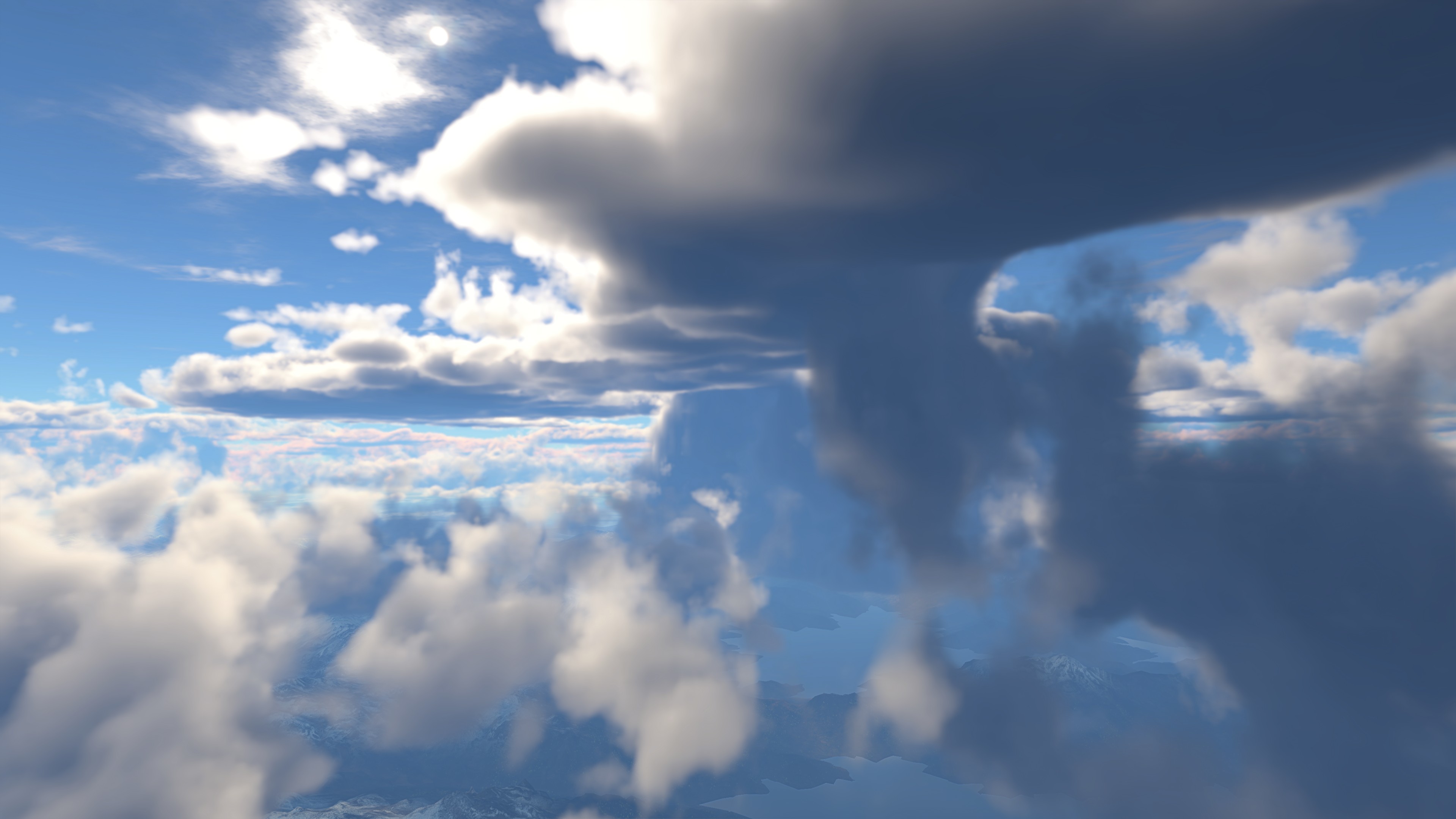
Noon, flight among cumulus and altostratus clouds in sunny weather.
The scattering and absorption model of sunlight has changed. First of all, we’ve improved the spectral model of light scattering. Previously, air scattered light taking into account Rayleigh and Mie scattering, but with a simplified model. The new version uses refined spectral modeling, which more accurately reproduces the shades of the sky under different conditions.
The game will now have an ozone layer. During the day, the sky on our planet is blue mainly due to Rayleigh scattering; at sunrise and sunset, the atmosphere remains blue because of the property of ozone to absorb a specific wavelength in the sunlight spectrum. Also, ozone absorption additionally paints the higher clouds in orange and pink at sunrise and sunset.
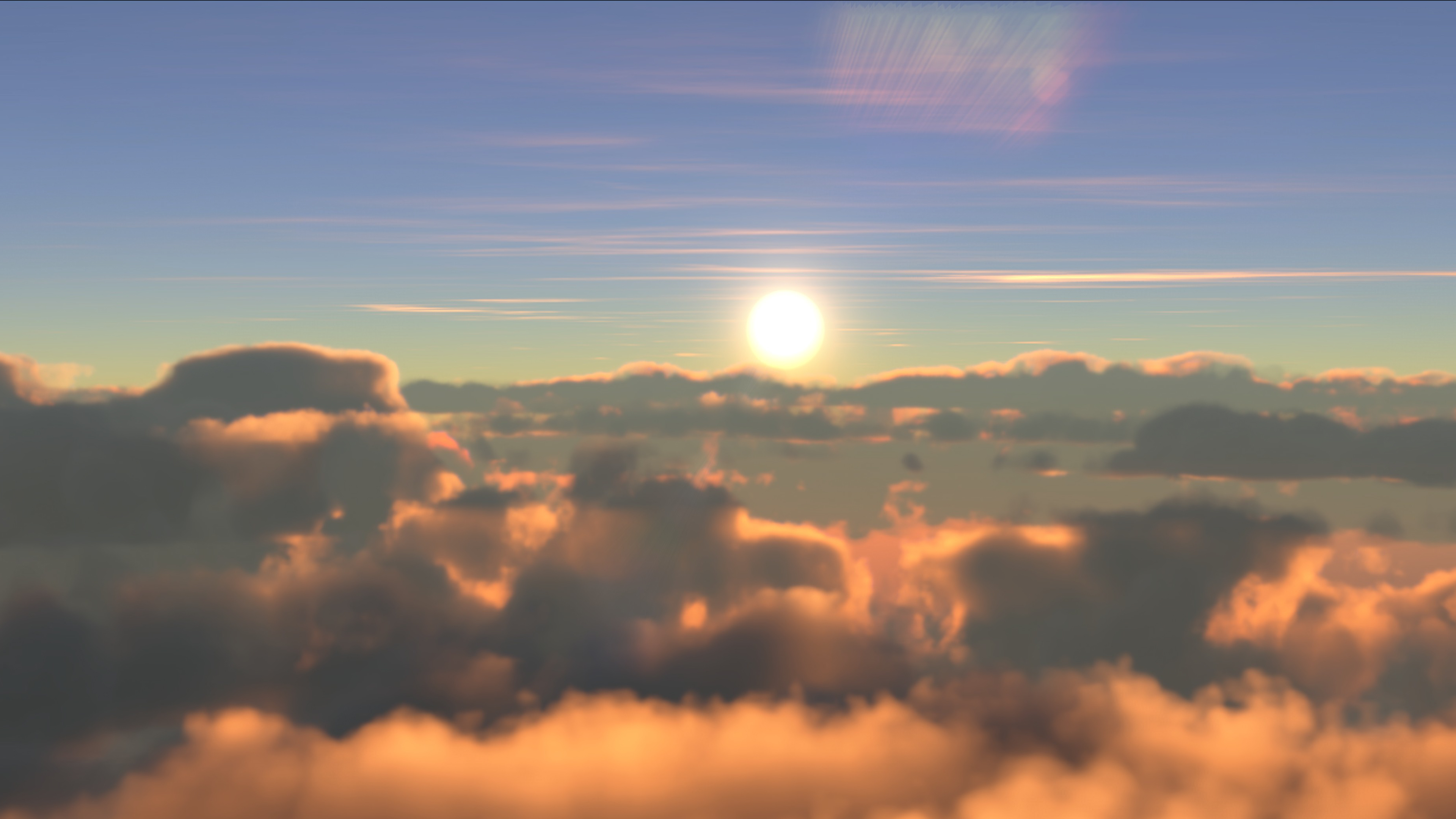
Sunlit clouds at sunset
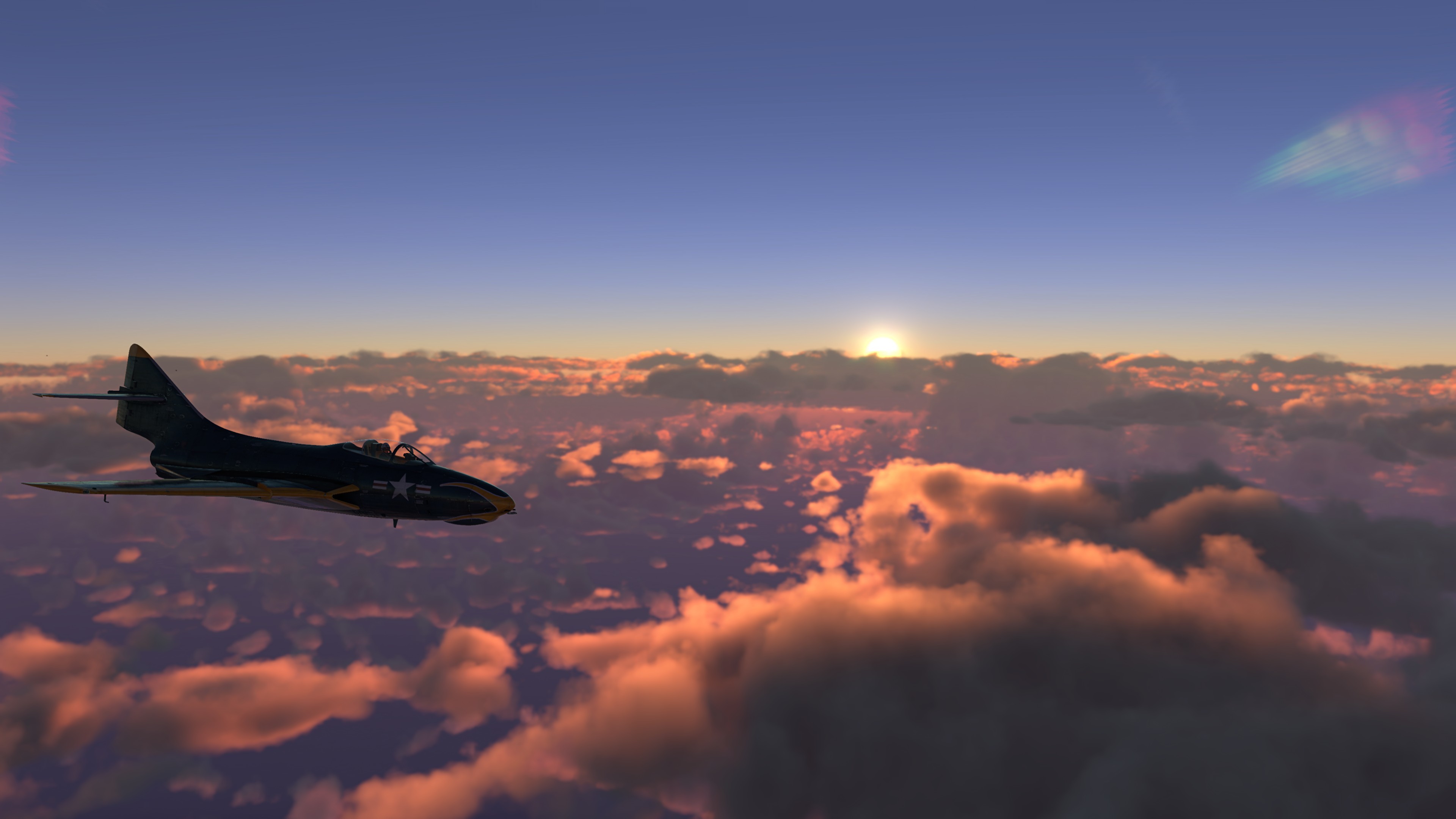
Ozone paints the sky in deep blue at sunset and sunrise.
Changes to clouds are the most noticeable improvement. Previously we used only one relatively thin layer of clouds, and we had to choose where to place it in every battle. Now we are modeling tropospheric clouds at heights from hundreds of metres up to fifteen kilometres and higher, and different types of clouds can be in the game at the same time. Clouds differ in morphological type - we have implemented all types of clouds, except for the most exotic and rare ones. Cumulus, stratus, altocumulus, stratocumulus, altostratus, cumulonimbus and cirrus clouds are now presented in the game, and all types of clouds can occur simultaneously in the War Thunder sky, depending on the weather settings for each battle. If it is raining below a cloud, the pillar of droplets is clearly visible from afar due to the additional scattering of light on the raindrops.

A view of cumulus and altocumulus clouds at dawn.
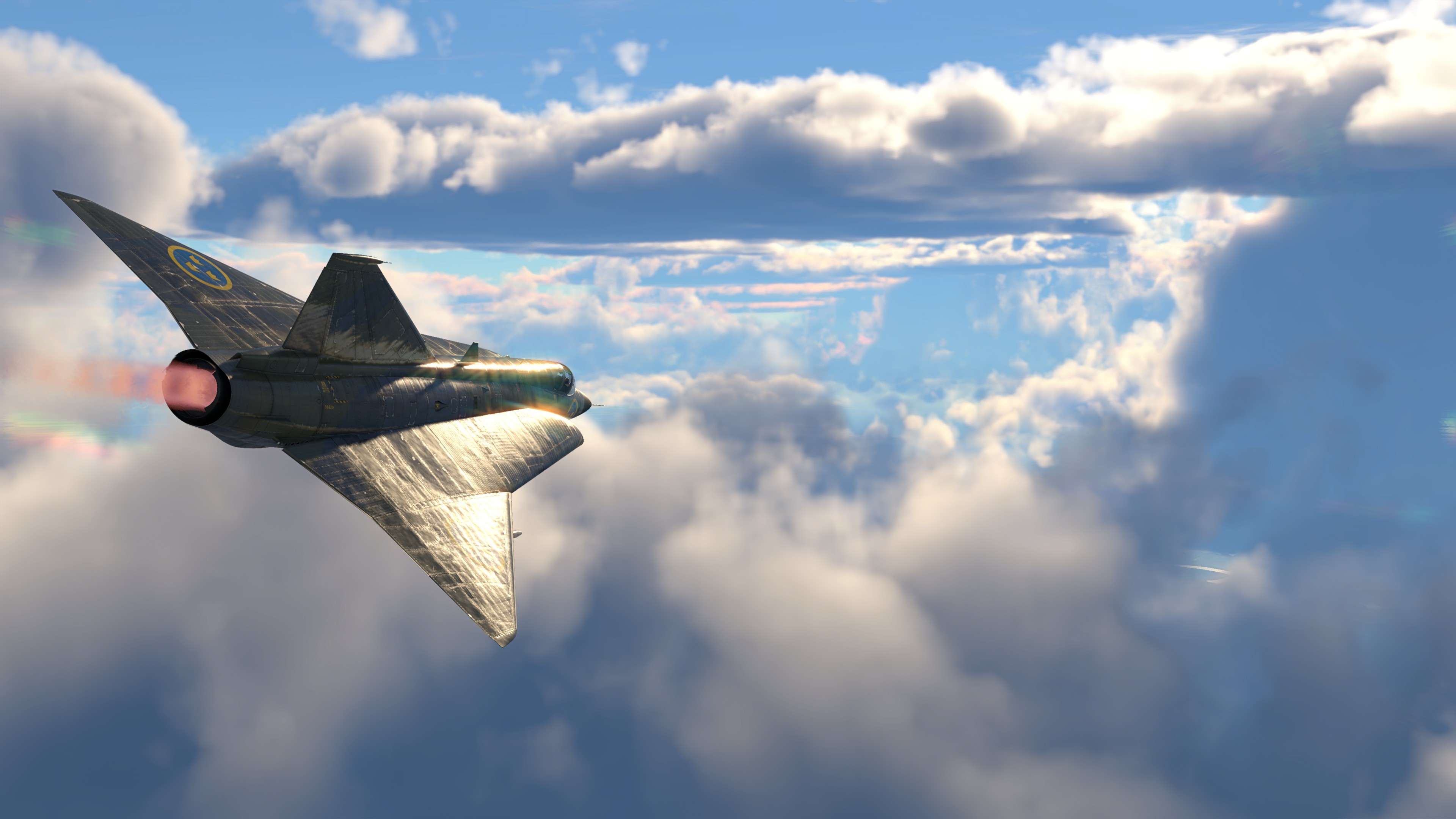
Flight between cloud layers
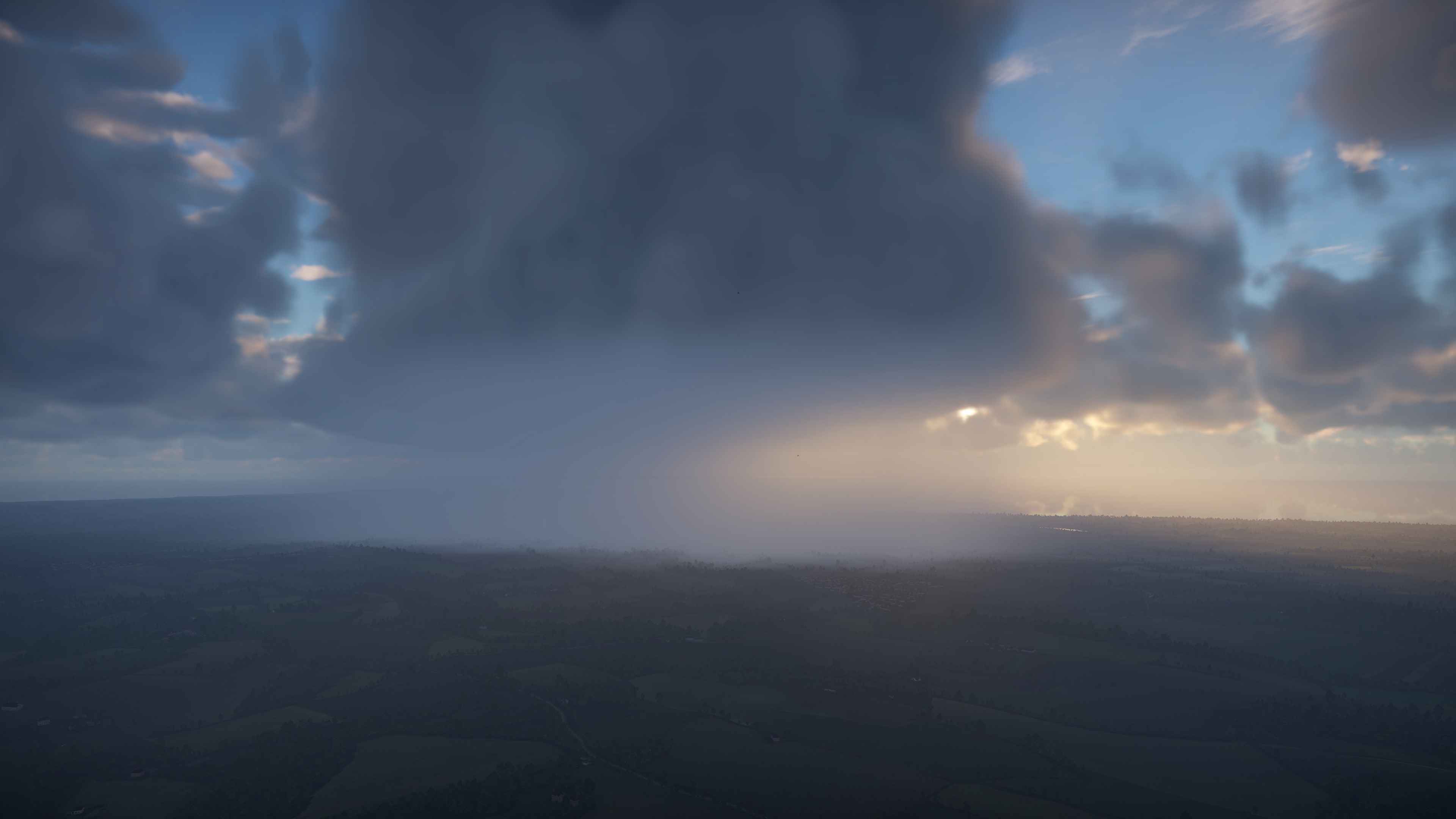
Rain from a cloud, the boundaries of the pillar of raindrops is clearly visible
Sunlight, scattered and absorbed by the clouds and atmosphere, makes skies look beautiful and varied. Depending on the density of the cloud, the color of the illumination also changes in its different parts, from a light translucent white haze to a dark gray thundercloud. To illuminate the clouds, we approximate the internal multiple scattering of light from the sun and the sky inside the cloud. Each cloud actually becomes a source of light and the structure of the cloud itself becomes visible, the eye can clearly see the inhomogeneity of each type of cloud. All clouds illuminate and shade the neighboring ones, and this is how the picture of a deep, voluminous cloudy sky is formed.

Cumulus clouds with and without multiple scattering
Picturesque pillars of light (“God rays”), or beams of sunlight clearly distinguishable against the shaded background of the clouds are called crepuscular rays. This effect is automatically obtained in Dagor Engine 6.0, since we model the lighting with a sufficient level of detail. Along with the crepuscular rays, the game also sees the anti-crepuscular rays, which are especially visible when flying at a height from the side of the sun in hazy weather. These effects will appear in the game due to the property of clouds to partially transmit sunlight, casting a shadow not only on the ground and themselves, but also on the air in the entire atmosphere.
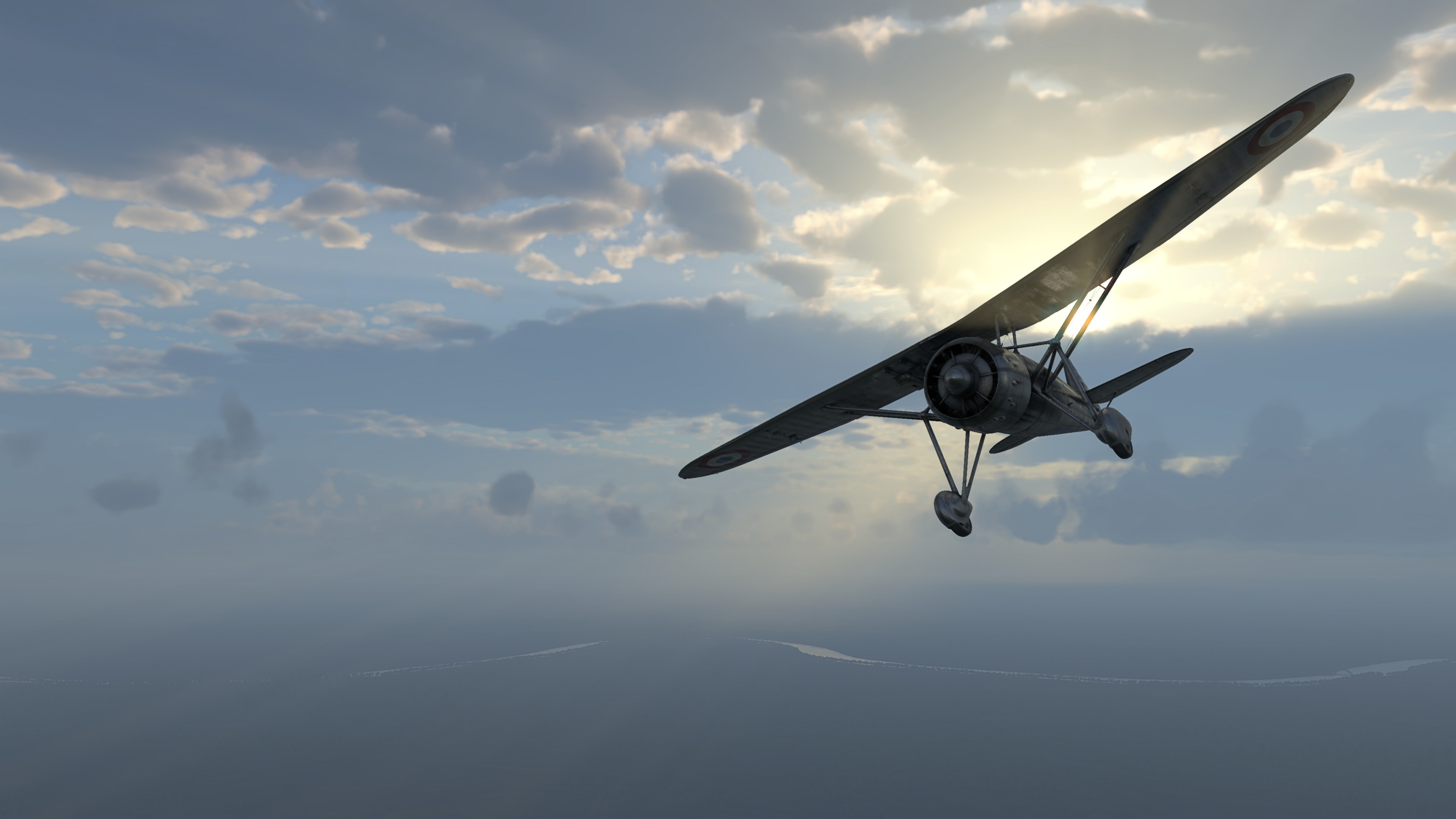
Sunset, pillar of light shines through a gap in clouds
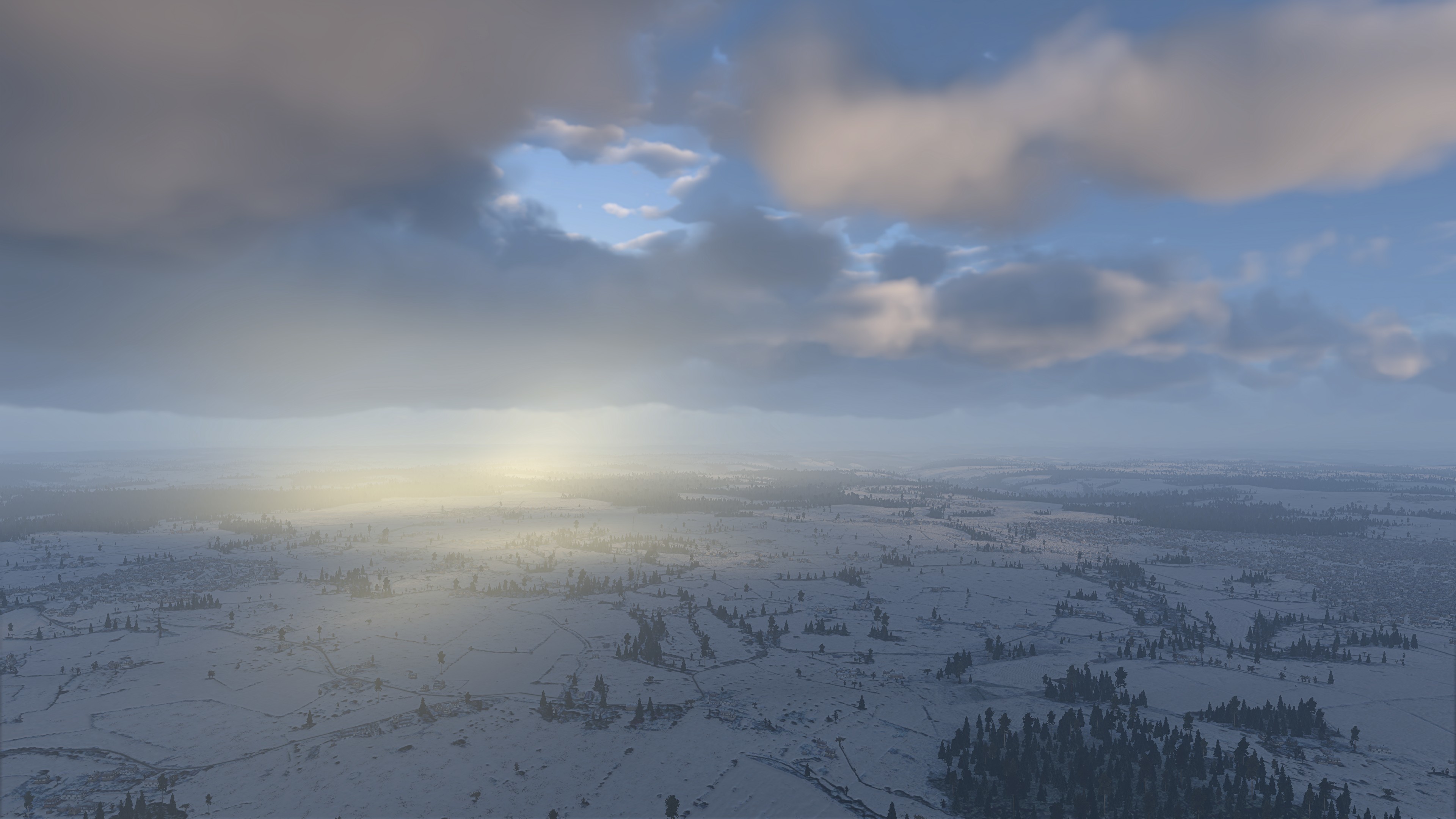
Afternoon, crepuscular rays, viewed from height on the ground’s surface.
Fog and mist are now fully fledged parts of the atmosphere. In the new version of our graphics engine, fog is modeled with the same algorithms that create clouds and atmosphere. Due to this, the fog has become less homogeneous, and scatters light correctly.
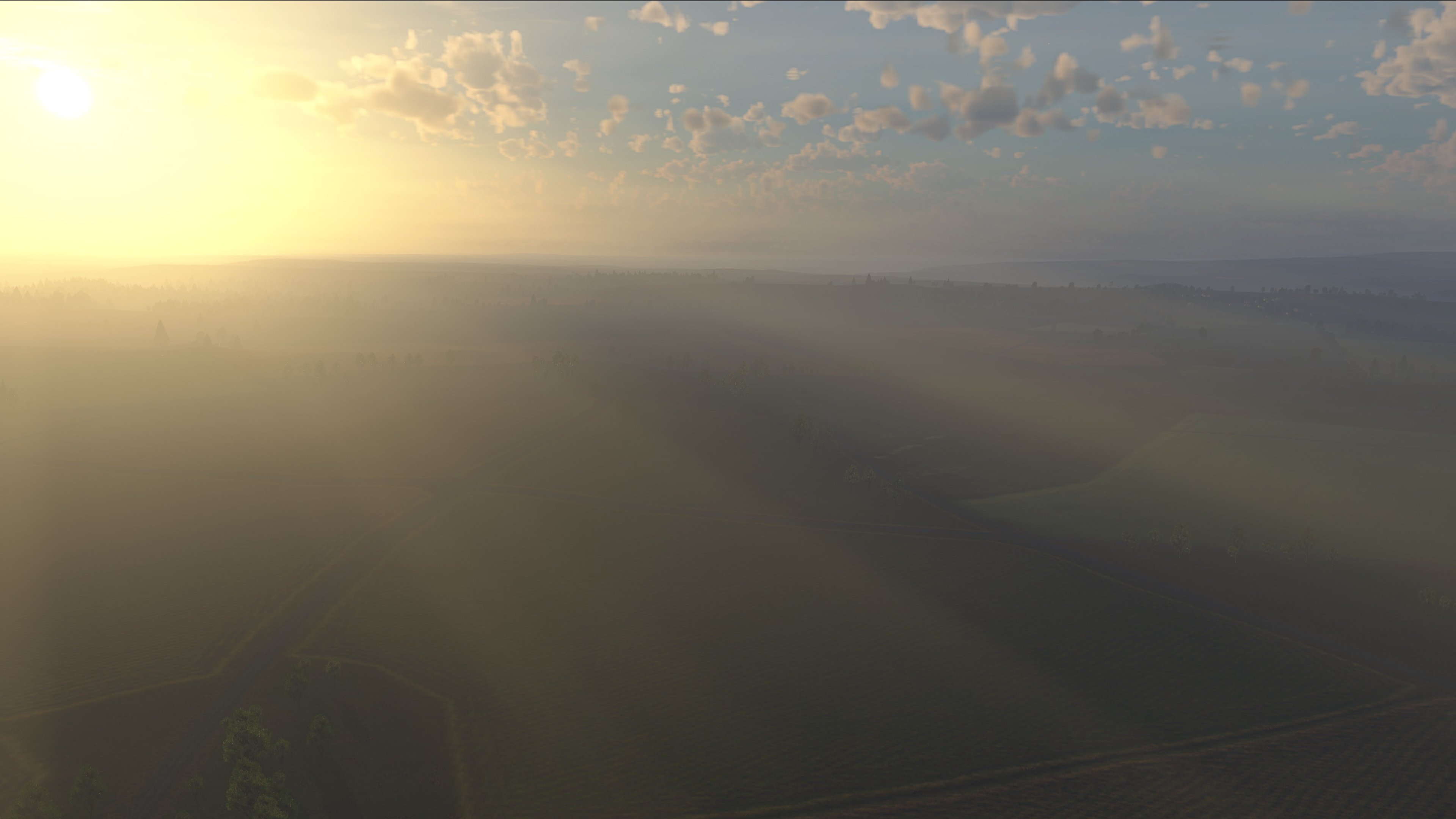
Fog in the morning light.
In short, the game has its own atmosphere! This sophisticated mathematical model allows us to simulate visually accurate effects of the sky, clouds, scattering of sunlight at any height and at every point on our planet.

Earth’s atmosphere from Space, from low orbit at 200km (game engine).
Not only our planet too! For example, we can simulate a dawn on Mars by simply setting parameters for the density and thickness of the atmosphere, the nature of the ozone layer, and the size of the planet. The atmosphere of Mars is very thin, and the sunset appears with a blue color as Rayleigh scattering simply does not have time to absorb the blue light; there is very little ozone and, due to the absence of a magnetic field, it is evenly distributed in the atmosphere of the red planet. In addition, there is no water vapor, instead dust storms constantly rage. Compare our modelling with the images from the ‘Curiosity rover’ - looks pretty much similar, doesn't it?
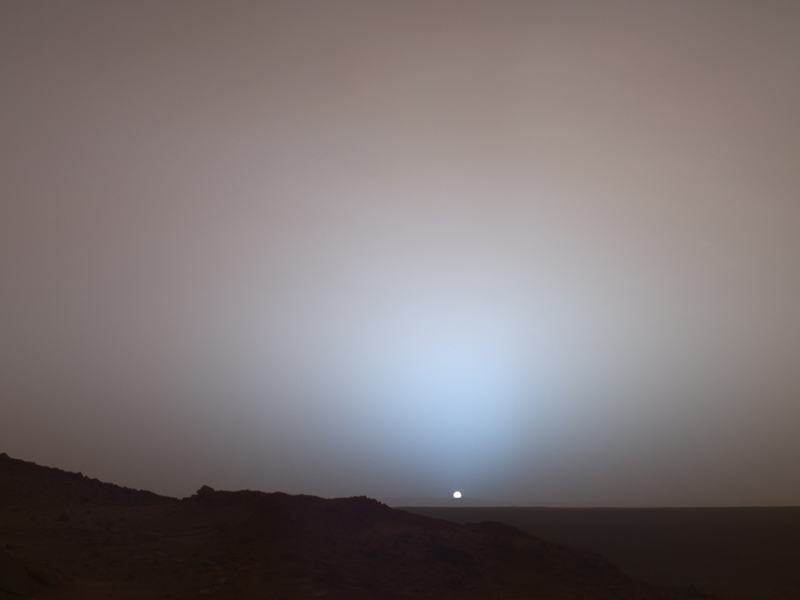
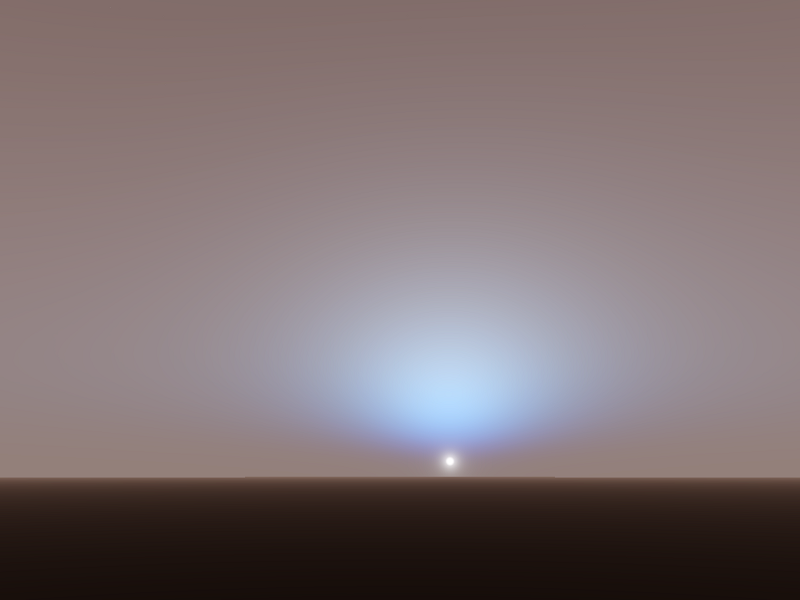 Dawn on Mars (NASA photo[www.nasa.gov]) Dawn on Mars in the Dagor Engine 6.0 (the parameters of Mars atmosphere were taken from Atmosphere of Mars[en.wikipedia.org])
Dawn on Mars (NASA photo[www.nasa.gov]) Dawn on Mars in the Dagor Engine 6.0 (the parameters of Mars atmosphere were taken from Atmosphere of Mars[en.wikipedia.org])
In previous versions of the Dagor Engine, the sky, clouds and fog were created with separate algorithms and were not united into a system. Physically, the sky in War Thunder was quite authentic. However, to achieve a better visual resemblance with the real sky, it lacked the relationship between atmospheric phenomena. In the new version of the Dagor Engine, we have managed to model a realistic atmosphere with the correct distribution and scattering of sunlight, both in the sky and on the Earth's surface. We’ve also created new clouds of different types at different heights, and significantly improved the appearance of mist and fog.

Noon, flight among cumulus and altostratus clouds in sunny weather.
The scattering and absorption model of sunlight has changed. First of all, we’ve improved the spectral model of light scattering. Previously, air scattered light taking into account Rayleigh and Mie scattering, but with a simplified model. The new version uses refined spectral modeling, which more accurately reproduces the shades of the sky under different conditions.
The game will now have an ozone layer. During the day, the sky on our planet is blue mainly due to Rayleigh scattering; at sunrise and sunset, the atmosphere remains blue because of the property of ozone to absorb a specific wavelength in the sunlight spectrum. Also, ozone absorption additionally paints the higher clouds in orange and pink at sunrise and sunset.

Sunlit clouds at sunset

Ozone paints the sky in deep blue at sunset and sunrise.
Changes to clouds are the most noticeable improvement. Previously we used only one relatively thin layer of clouds, and we had to choose where to place it in every battle. Now we are modeling tropospheric clouds at heights from hundreds of metres up to fifteen kilometres and higher, and different types of clouds can be in the game at the same time. Clouds differ in morphological type - we have implemented all types of clouds, except for the most exotic and rare ones. Cumulus, stratus, altocumulus, stratocumulus, altostratus, cumulonimbus and cirrus clouds are now presented in the game, and all types of clouds can occur simultaneously in the War Thunder sky, depending on the weather settings for each battle. If it is raining below a cloud, the pillar of droplets is clearly visible from afar due to the additional scattering of light on the raindrops.

A view of cumulus and altocumulus clouds at dawn.

Flight between cloud layers

Rain from a cloud, the boundaries of the pillar of raindrops is clearly visible
Sunlight, scattered and absorbed by the clouds and atmosphere, makes skies look beautiful and varied. Depending on the density of the cloud, the color of the illumination also changes in its different parts, from a light translucent white haze to a dark gray thundercloud. To illuminate the clouds, we approximate the internal multiple scattering of light from the sun and the sky inside the cloud. Each cloud actually becomes a source of light and the structure of the cloud itself becomes visible, the eye can clearly see the inhomogeneity of each type of cloud. All clouds illuminate and shade the neighboring ones, and this is how the picture of a deep, voluminous cloudy sky is formed.

Cumulus clouds with and without multiple scattering
Picturesque pillars of light (“God rays”), or beams of sunlight clearly distinguishable against the shaded background of the clouds are called crepuscular rays. This effect is automatically obtained in Dagor Engine 6.0, since we model the lighting with a sufficient level of detail. Along with the crepuscular rays, the game also sees the anti-crepuscular rays, which are especially visible when flying at a height from the side of the sun in hazy weather. These effects will appear in the game due to the property of clouds to partially transmit sunlight, casting a shadow not only on the ground and themselves, but also on the air in the entire atmosphere.

Sunset, pillar of light shines through a gap in clouds

Afternoon, crepuscular rays, viewed from height on the ground’s surface.
Fog and mist are now fully fledged parts of the atmosphere. In the new version of our graphics engine, fog is modeled with the same algorithms that create clouds and atmosphere. Due to this, the fog has become less homogeneous, and scatters light correctly.

Fog in the morning light.
In short, the game has its own atmosphere! This sophisticated mathematical model allows us to simulate visually accurate effects of the sky, clouds, scattering of sunlight at any height and at every point on our planet.

Earth’s atmosphere from Space, from low orbit at 200km (game engine).
Not only our planet too! For example, we can simulate a dawn on Mars by simply setting parameters for the density and thickness of the atmosphere, the nature of the ozone layer, and the size of the planet. The atmosphere of Mars is very thin, and the sunset appears with a blue color as Rayleigh scattering simply does not have time to absorb the blue light; there is very little ozone and, due to the absence of a magnetic field, it is evenly distributed in the atmosphere of the red planet. In addition, there is no water vapor, instead dust storms constantly rage. Compare our modelling with the images from the ‘Curiosity rover’ - looks pretty much similar, doesn't it?

 Dawn on Mars (NASA photo[www.nasa.gov]) Dawn on Mars in the Dagor Engine 6.0 (the parameters of Mars atmosphere were taken from Atmosphere of Mars[en.wikipedia.org])
Dawn on Mars (NASA photo[www.nasa.gov]) Dawn on Mars in the Dagor Engine 6.0 (the parameters of Mars atmosphere were taken from Atmosphere of Mars[en.wikipedia.org])